It started with a pothos in the middle of winter.
It was January of 2019, and I’d been working at a plant and flower shop in Old Town for about a month, spending almost every one of my shifts suggesting the popular house plant to customers looking for something “easy to take care of.”
I’d lead them to a tray of pothos in 4-inch growers pots and regurgitate a version of, “this is a great starter plant! It does well in most lighting conditions but prefers bright filtered light and only needs to be watered once a week or so. It’s also pretty forgiving if you miss a watering.” In actuality, I had no idea what I was talking about. God forbid a customer ask me how to take care of a fiddle leaf fig. I’d Google it right in front of them.
There were never houseplants in homes where I grew up, and the only foliage in my apartment of three years were the dead leaves tracked in on winter boots. There were glimpses of greenery potential every year during the holiday season, when my roommates put up a Christmas tree and strung artificial holly and mistletoe along the doorways, but plants weren’t regularly in sight.
After a couple months of constant exposure to houseplants at the plant and flower shop, I finally decided to put my employee discount to use. I picked out one of the healthy pothos in a 4-inch growers pot, took it home, set it on my east-facing windowsill (bright light in the morning) and named her Calypso.
Chicago was facing a brutal winter at the time, and I was very depressed. I could go into the symptoms of Seasonal Affective Disorder (SAD), but the truth is that my depression transcends seasons and has been ongoing since childhood. It didn’t help that I was still struggling to find my footing less than a year after graduating college and feeling completely burned out, defeated and unmotivated. One day, a customer ordering flowers told me about a study showing that patients in hospital rooms with decorative plants and flowers had significantly positive physiological responses compared to those without – lower systolic blood pressure, and lower ratings of pain, anxiety and fatigue. I thought, hey, I have pain, anxiety and fatigue! Maybe this plant would fix everything for me.
I bought Calypso days before the Polar Vortex and naively kept her on the windowsill (she survived, but barely). Together we braved the treacherous winter that lasted well into May. Every morning she and I would pseudo-photosynthesize next to my happy lamp, and every Saturday morning I’d give her a big drink of water. A couple weeks would pass, and I would notice a tiny bright green leaf uncurling. I felt a sense of purpose, and gradually, existence became slightly less excruciating. We were doing all right against the odds.
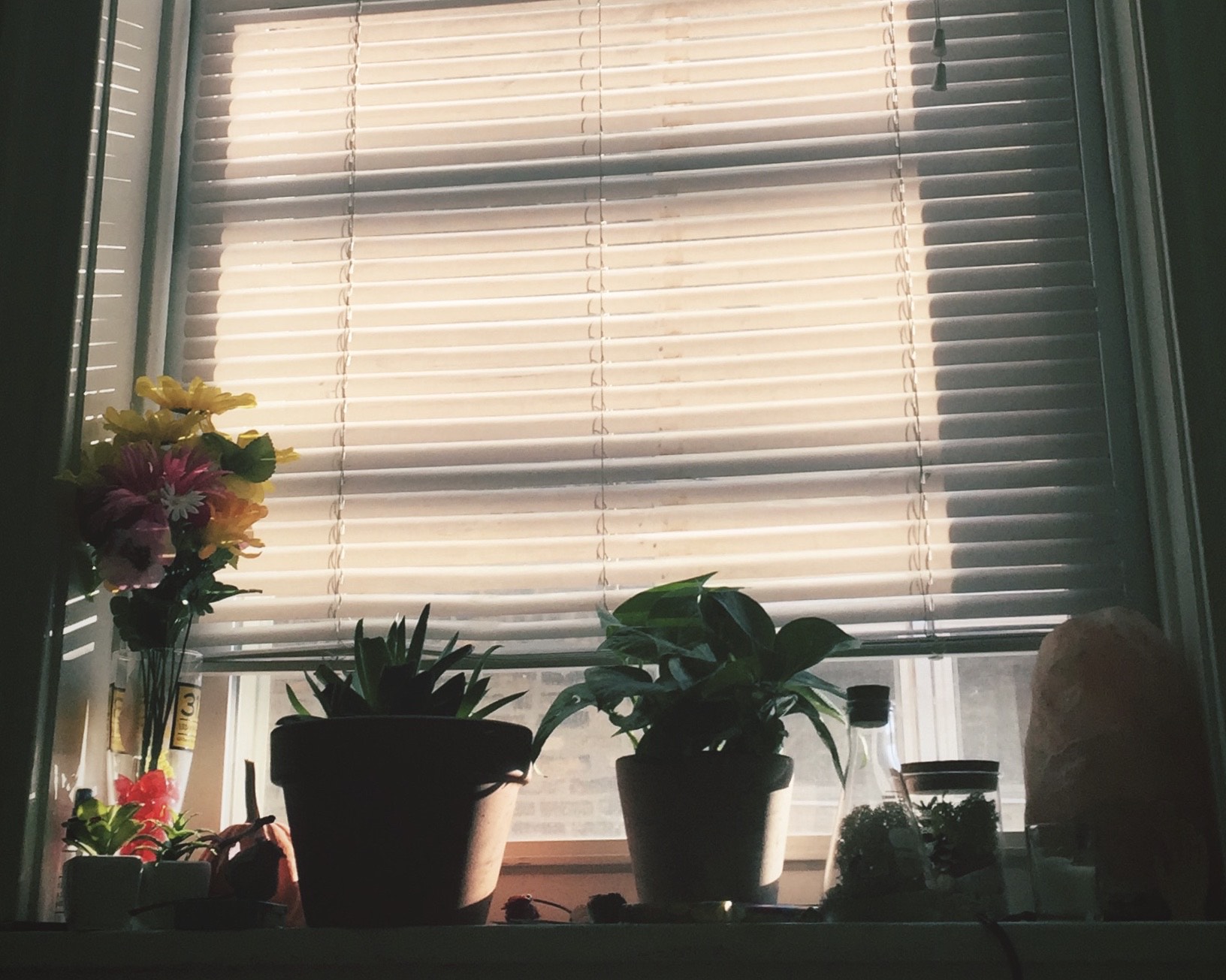
Calypso on her windowsill during the Polar Vortex on January 30, 2019. (Rachel Fernandez, 14 East)
Months went by, and I slowly added to my plant collection — a monstera, then a snake plant, then a peperomia — until I started running out of space to support my recent obsession. I learned about their unique characteristics, memorized care instructions and spent weeks watching them grow. Their foliage would subtly wilt and rise between waterings like lungs breathing in and out. Every once in a while, I would gently wipe down their dusty leaves with a damp cloth using the same care and attention I used brushing the hair of my dolls as a kid.
Most of my conversations became plant-based, and I was happy to find people just as enthusiastic about the topic. Ariel Wagner, an environmental studies graduate student at DePaul, also has an urban jungle in her bedroom. Fourteen small to medium-sized plants are dispersed across her desk, windowsill and dresser alongside the humidifier, a pitcher of filtered water and a pink LED grow light she has for them. They’re almost all healthy and lush.

Ariel Wagner sitting at her desk with part of her plant collection on November 30, 2019. (Rachel Fernandez, 14 East)
“Bringing the nature inside personal areas just relaxes you,” Wagner said. “You can see growth happening and slight changes … with my prayer plant, I can notice when it’s ready for bed and it goes up. It’s so slight you don’t even notice it until you’re like, ‘oh, all of their leaves are more straight!’”
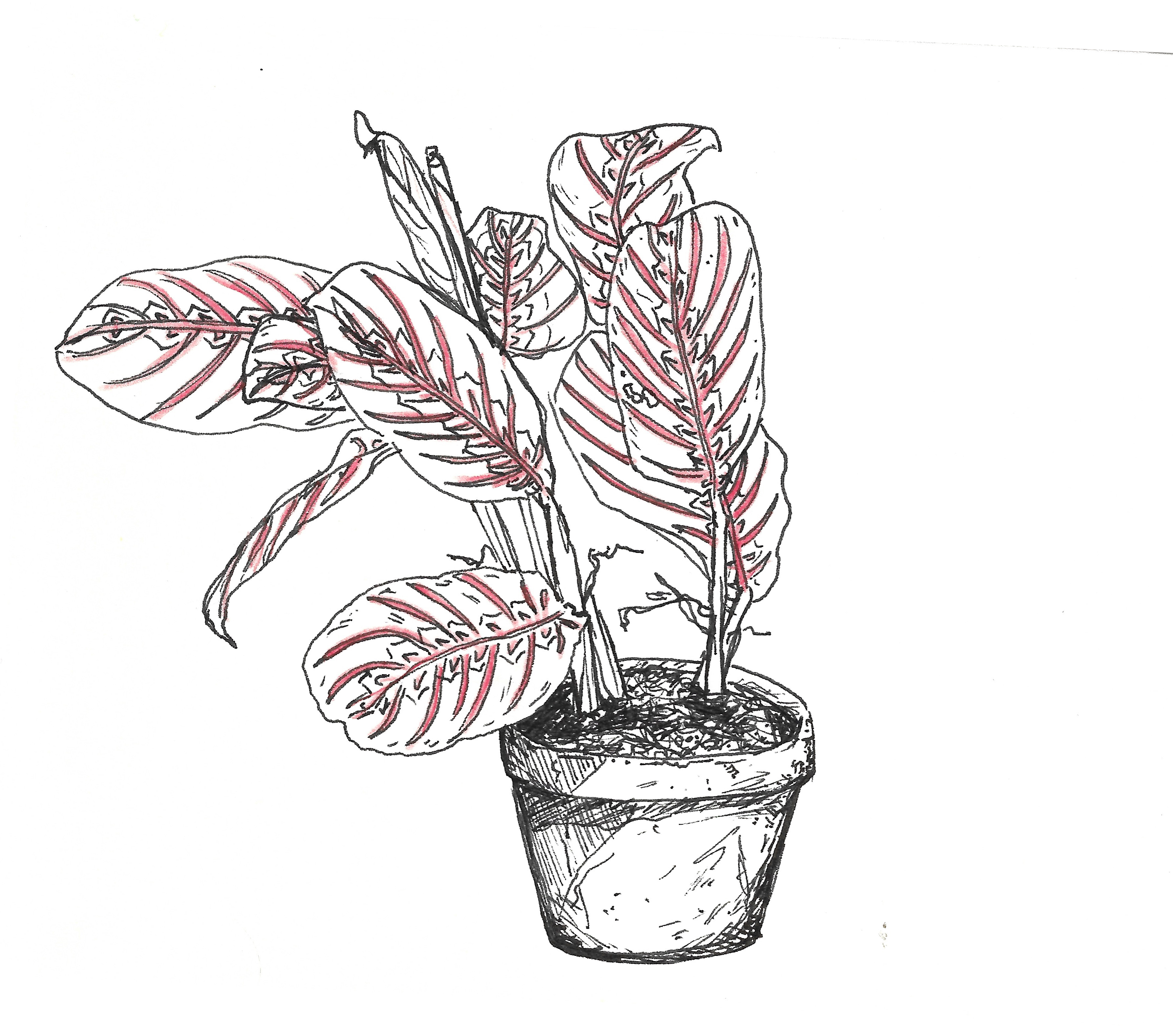
The leaves of a prayer plant (above) lie flat during the day and fold up at night. (Illustration by Haley Tweedell)
As a child, Wagner enjoyed biology and interacting with nature, including helping her mom in their garden. She got her first potted plant — a type of succulent called a hens and chicks plant — when she was 19 and living on her own for the first time.
“I killed it pretty quick,” Wagner said. “It was in south-facing windows, and I was like, ‘I’m cool! I’m doing it, and I’m not overwatering it. It will be fine.’ And then, yeah, it died. I was pretty sad.”
(Tip: succulents are deceptively tricky, especially during Chicago winters. They can go long periods of time without watering, but they prefer a lot of bright, direct sunlight and some can be unforgiving without the right conditions.)
Plants are mortal, and an often overlooked part of being a plant parent is accepting death for regrowth. Leaves will turn yellow or dry up, stems will drop, roots will rot, and it’s all part of the process.
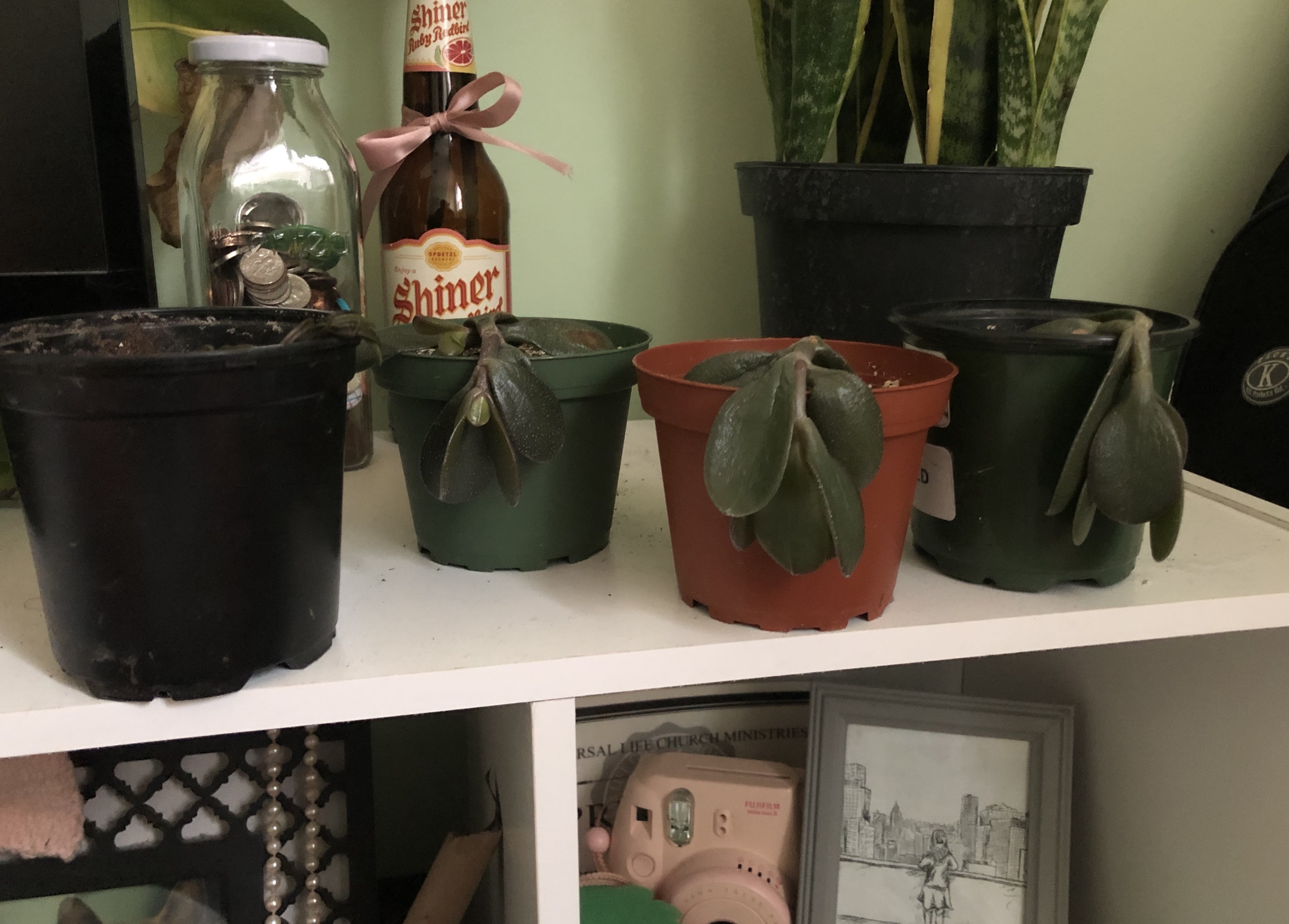
Propagating jade plants that were frozen over due to being left outside on November 13, 2019. (Rachel Fernandez, 14 East)
“I think it’s easy to put the blame on yourself for the fatalities that happen, but it happens,” Wagner said. “I’ve killed so many plants unintentionally because they were things that I thought I had a grasp on when I hadn’t done the research or there were crucial times that I wasn’t anticipating like hot spells and freezing over.”
With plants, it can be easy to care too much. Overwatering is a common mistake made by eager plant owners wanting to make sure their plant babies stay hydrated –but roots end up sitting in water and rotting to the point of no return. It can also be hard to cut off dead or yellowing leaves, holding on to the hope that they might come back from the dead. But as long as the unhealthy foliage is attached, it will be soaking up nutrients that could be going to healthy parts of the plant.
“They’re living things, they’re creatures, they’re pets, so you need to take care of them,” Wagner said. “Sure, they don’t ‘meow,’ but they certainly suffer, and they have a certain depth or dimension to thriving in the world or in [some cases] not thriving.”
But Wagner’s gotten the hang of it. The oldest plant in her collection is a dieffenbachia she’s had for almost three years. Several others are a vibrant green that can only come from good maintenance and trial and error. “Think of each plant like their own individual system and then being within your home system,” she said, “and consider the factors at play.”
Many people start by bringing home a plant from Trader Joe’s or Home Depot (both excellent places to buy houseplants) that is proudly advertised as “air purifying.” Plants photosynthesize by taking in carbon dioxide from the external atmosphere through diffusion in their leaves. Any other gasses present with the carbon dioxide in a confined space— such as small amounts of carbon monoxide, formaldehyde and nitrous oxide — are also going to enter into the plant, so they do have a bit of an air purifying quality to them, but a pothos isn’t going to undo a gas leak.
“You can’t just have a few plants growing in your windowsill and expect it to purify your indoor air,” said John Dean, a biochemist and professor of plant physiology and plant biology at DePaul. “You would have to have a large density of plants to really observe and effect.”
You hate to see it, but myth busted.
“I certainly wouldn’t deter someone from having a large number of plants,” he said, “but I don’t think that’s going to solve [any respiratory] problems.”
Other benefits of houseplants are mostly psychological. Dean compares indoor plants to works of art that can be psychologically healing for some, but not others. In regard to the hospital patient study, he notes that the mere act of receiving a potted plant or flower arrangement is beneficial. Basically, it’s the thought that counts.
In his own home, Dean has a room with a collection of between eight and 10 orchids that he maintains. He believes there are aesthetic benefits in plant ownership and that cultivating and taking care of something long-term fosters a sense of pride. “When you see them bloom they’re pretty remarkable,” Dean said.
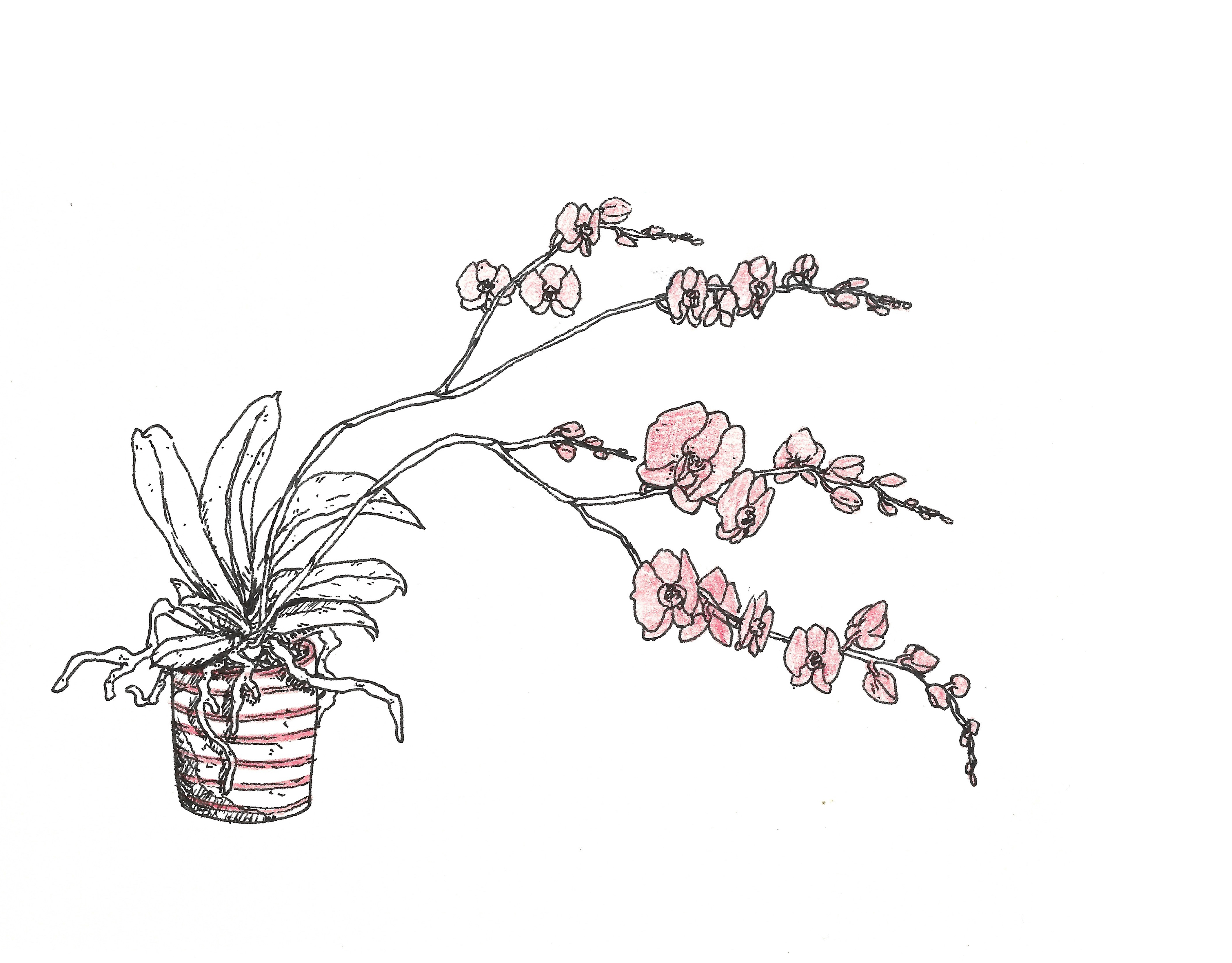
An orchid plant. (Illustration by Haley Tweedell)
For me, there’s also an element of desperately clinging to nature since living in a city often devoids us of green. There’s something so satisfying about using your hands to test a plant’s soil for moisture or to feel a new leaf. Calypso has sprouted several new leaves over the past 11 months, and I don’t dread waking up every morning the way I used to. Not everything is fixed, but both of us are growing.
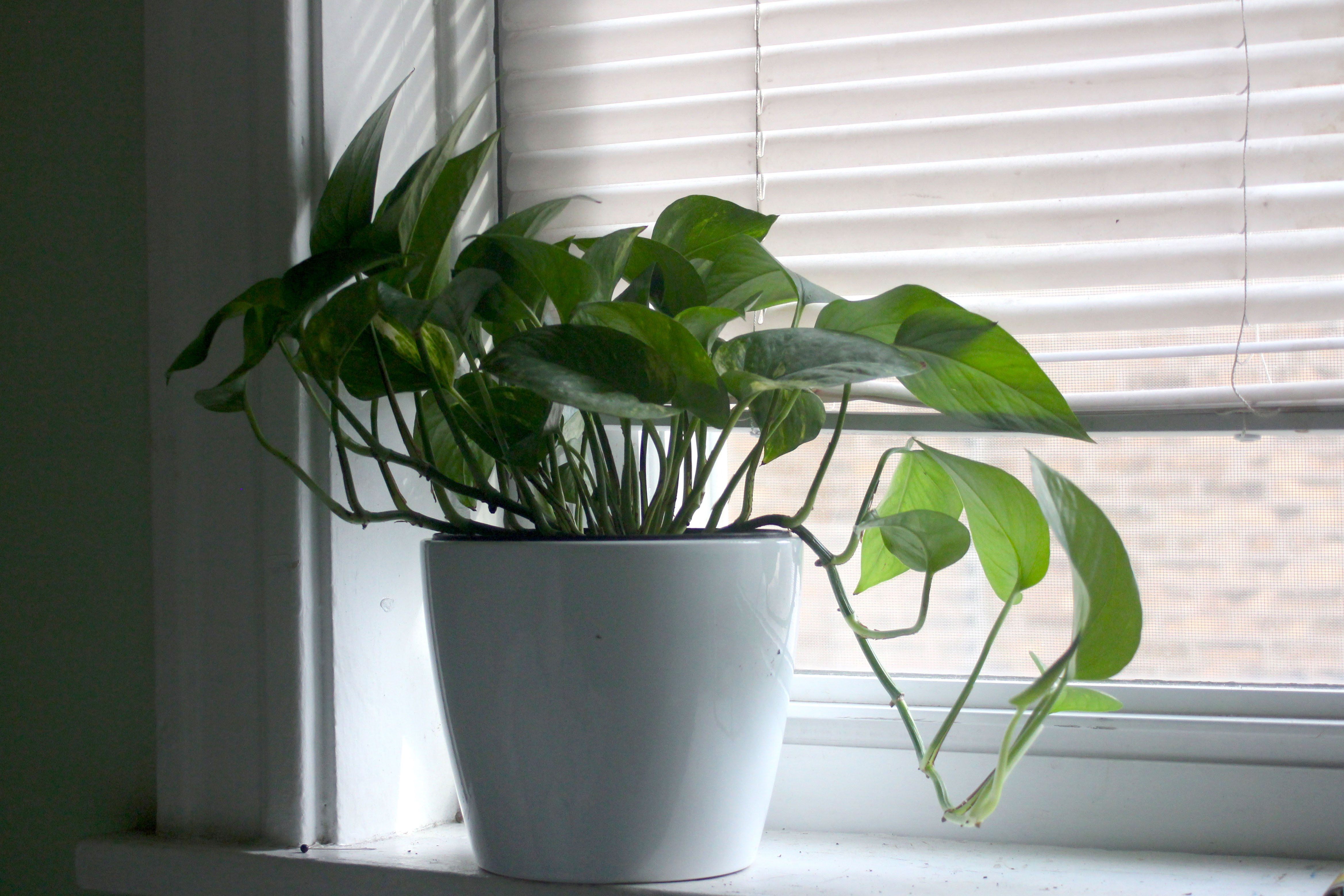
Calypso on a windowsill on December 10, 2019. (Rachel Fernandez, 14 East)
Sometimes it feels like I’m holding nature captive and selfishly confining a plant’s roots to terracotta barriers and its leaves the four walls of my bedroom, but I reconcile by caring for and doing my best to understand them. Plants are always telling us something, and learning their language just takes time and patience.
Leaves tell us that change can be slow and steady. They don’t have a growth deadline. They sprout when the conditions are right and need only the right combination of light and water to survive.
Plants do well on their own, but they’re not afraid to ask for a little help. When a peace lily’s leaves droop, they just want some water. When an ivy’s leaves get dry and crispy, they might just need to be moved out of direct sunlight.
Parts of plants will die, and it’s necessary to cut off those parts to allow for new growth.
People can learn a lot from plants as long as they’re willing to listen.

Rachel Fernandez’s plant collection including an Algerian ivy, a zz plant and a snake plant on December 30, 2019. (Rachel Fernandez, 14 East)
Resources for Budding Plant Parents:
ASPCA list of plants toxic to cats and dogs: Check if you have pets that may be inclined to nibble at your leaves.
Planta app: This app lets you log all of your plants, and it will give care tips and push notifications for when to water them. It also gives suggestions for different plants based on the characteristics of your room (only available for iPhones).
Picture This app (iPhone) (Android): The best app for plant identification. Take a picture of a plant, and it will tell you it’s name and characteristics.
Books About Plants:
The New Plant Parent by Darryl Cheng: A general guide for houseplant care, but with a focus on observation and developing intuition rather than focusing on specific rules.
Root, Nurture, Grow by Caro Langton and Rose Ray: The book to grab if you want to learn more about propagation so you can share your plants with your friends (it is the holiday season, after all).
The Best Plant Book Ever by George Seddon: We have a copy of this book in the plant and flower shop where I work, and all of us swear by it. Very concise but comprehensive information on almost any houseplant you can think of. It’s out of print and hard to find, but if you ever come across a copy, get it immediately.
YouTube Accounts About Plants:
Summer Rayne Oakes: Oakes has a degree in Environmental Science and Entomology from Cornell University which makes her videos on plant care and characteristics extremely informative.
Crazy Plant Guy: This channel is great for general tips, and I aspire for his plant collection.
PLANTERINA: This is my go-to channel for information on propagating.
Instagram Accounts About Plants:
Houseplantjournal: Darryl Cheng’s Instagram account with highlights on lighting, soil aeration and old leaves. He gives extremely useful information, and it helps that all of his photos are pretty.
That One Plant Guy: This account has an incredibly broad range of tips and information for houseplant care coming from someone who went to college for horticulture.
Hilton Carter: Carter is a plant and interior stylist, so there aren’t many care tips on this account, but his photos and designs with plants are stunning. More of an inspiration account to follow.
Instagram Plant Meme Accounts (very important):
Facebook Groups:
House Plant Hobbyist: This is the big go-to houseplant group. People from all around the world post pictures and care tips which fosters a supportive community.
Chicago House Plant Hoarders: This is a local page for buying, selling and trading plants and getting to know people around the city with a plant obsession.
Wild Green Memes for Ecological Fiends: I believe meme groups are essential for any interest. This one has a wide range of memes about ecology, many of which are houseplant-specific.
Note: plants are NOT a cure for depression!! Please seek professional help


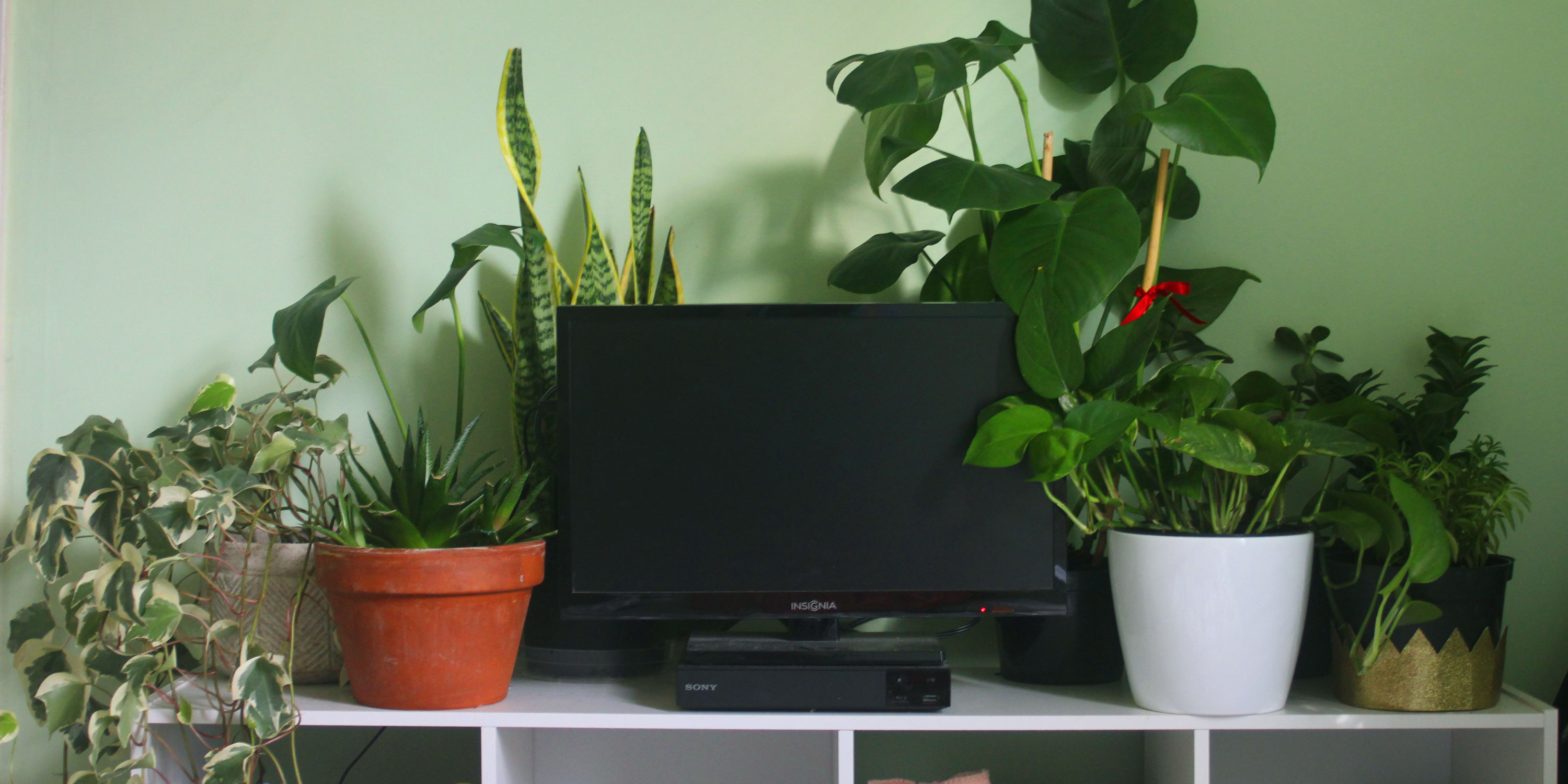

NO COMMENT